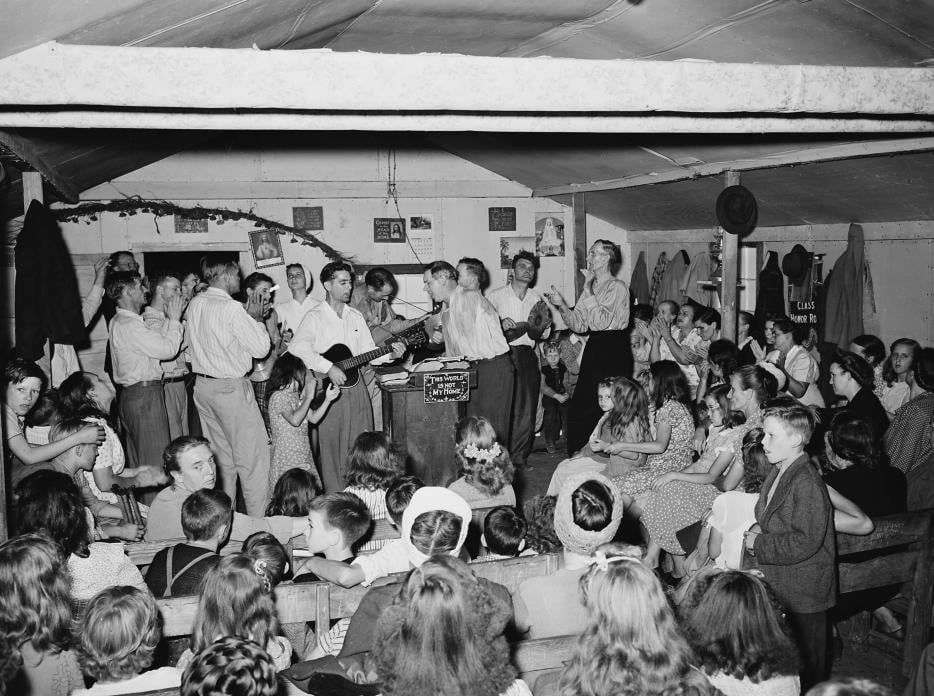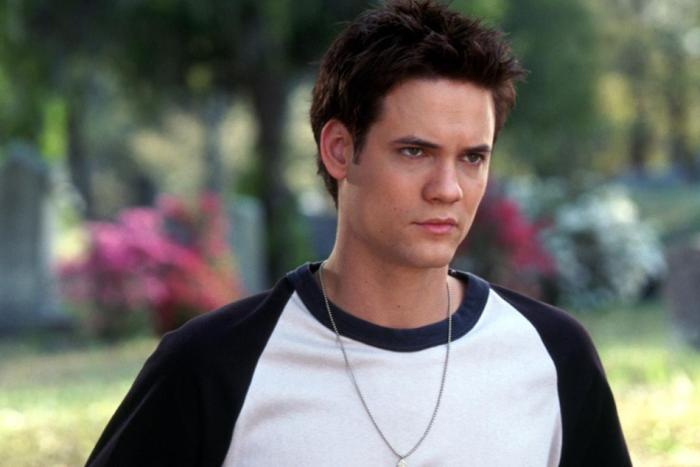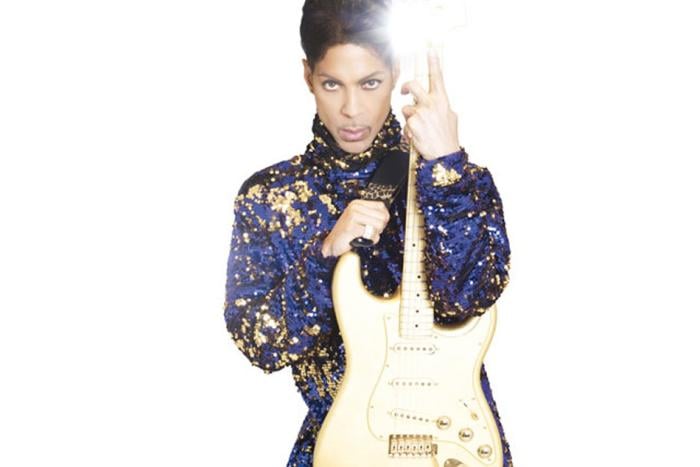The First World War (1914-8) destroyed a generation of young men yet many Europeans initially embraced it with an enthusiasm that shows how difficult it is to resist those emotions long activated by religion and now by nationalism, the new faith of the secular age. In August 1914, the cities of Europe were swept up in a festival-atmosphere, which, like the rituals of the French Revolution, made the “imaginary” of the nation an incarnate reality. Total strangers gazed enraptured into each other’s eyes; estranged friends embraced, feeling a luminous cohesion that defied rational explanation. The euphoria has been dismissed as an outbreak of communal madness, but those who experienced it said that it was the “most deeply-lived” event of their lives. It has also been called an “escape from modernity” since it sprang from a profound discontent with industrialised society, in which people were defined and classified by their function and everything was subordinated to a purely material end. The declaration of war seemed a summons to the nobility of altruism and self-sacrifice that gave life meaning.
“All differences of class, rank and language were flooded over at that moment by the rushing feeling of fraternity,” Stefan Zweig recalled: everyone “had been incorporated into the mass, he was a part of the people, and his person, his hitherto unnoticed person, had been given meaning….Each one was called upon to cast his infinitesimal self into the glowing mass and there to be purified of all selfishness”. There was a yearning to cast aside an identity that felt too lonely, narrow and confining and to escape from the “privacy” imposed by modernity. An individual “was no longer the isolated person of former times,” said Zweig. “No more are we what we had been so long: alone”, said Marianne Weber. A new era seemed to have begun. “People realised that they were equal,” said Rudolf Binding; “No one wished to count for more than anyone else…It was like a rebirth.” It “transported the body as well as the soul into a trance-like, enormously enhanced love of life and existence,” recalled Carl Zuckmayer, “a joy of participation, of living-along-with, a feeling, even, of grace.” The triviality of the “petty, aimless lounging life of peacetime is done with,” Franz Schanwecker exulted. For the first time, said Conrad Haenisch, a lifelong critic of German capitalism, he could join “with a full heart, a clean conscience, and without a sense of treason in the sweeping, stormy song: Deutschland, Deutschland uber alles.”
In the trenches, however, volunteers discovered that far from escaping industrialisation, they were entirely dominated by it. Like a sinister religious revelation, the war laid bare the “material,” “technological” or “mechanical” reality that twentieth-century civilisation concealed. “Everything becomes machinelike,” one soldier wrote; “one might almost term the war an industry of professionalised human slaughter.” It is a telling indictment of the loneliness and segmentation of modern society that many of these soldiers never forgot the profound sense of community they experienced in the trenches. “There enwrapped us, never to be lost, the sudden comradeship of the ranks,” T. E. Lawrence recalled. One of Simone de Beauvoir’s professors “discovered the joys of comradeship which overcome all social barriers” and determined never again to submit to “the segregation which in civil life separates young middle-class men from working chaps…something he felt like a personal mutilation.” Many found that they could not even hate the invisible enemy and were shocked when they finally saw the people they had been shelling for months: “They were showing themselves to us as they really were, men and soldiers like us, in uniform like us,” an Italian soldier explained. Fritz Kreisler remembered “the extraordinary lack of hatred” during the Austrian retreat of 1914.
“Everything becomes machinelike,” one soldier wrote; “one might almost term the war an industry of professionalised human slaughter.”
This secular war for the nation had given some of the participants experiences associated with the religious traditions: an ekstasis, a sense of liberation, freedom, equanimity, community and a profound relationship with other human beings, even the enemy. Yet the First World War heralded a century of unprecedented slaughter and genocide that was not inspired by religion, as people had come to know it, but by an equally commanding notion of the sacred: men fought for power, glory, scarce resources, and—above all—nation.
*
During the twentieth century, there would be many attempts to resist the modern state’s banishment of religion to the private sphere. To committed secularists, these religious efforts seemed like so many efforts to turn the clock back, but in fact all were modern movements that could have flourished only in our own time. Indeed, some commentators have seen them as postmodern, since they represented a widespread dissatisfaction with many of the canons of modernity. Whatever the philosophers, pundits or politicians claimed, people all over the world expressed a wish to see religion playing a more central role in public life. This type of religiosity is often called “fundamentalism” —an unsatisfactory term because it does not translate easily into other languages and suggests a monolithic phenomenon. In fact, though these movements share certain family resemblances, each has its own focus and trigger. In almost every region where a secular government has been established, a religious counter-cultural protest has developed as well, similar to the Muslim and Hindu reform movements that had emerged in British-controlled India. The attempt to confine religion to the individual conscience had originated in the west as part of western modernisation but to others it made no sense. Indeed, many would find the expectation unnatural, reductive and even damaging.
As I have written elsewhere in detail, fundamentalism, be it Jewish, Christian or Muslim, is not in itself a violent phenomenon. Only a tiny proportion of fundamentalists commit acts of terror; most are simply trying to live a devout life in a world that seems increasingly hostile to faith, and nearly all begin with what is perceived as an assault on them by the secular, liberal establishment. These movements tend to follow a basic pattern: first they retreat from mainstream society to create an enclave of authentic faith, rather as the Deobandis did in the subcontinent; at a later stage, some—but by no means all—engage in a counteroffensive to “convert” the broader society. Every single one of the movements I have studied is rooted in fear, a conviction that modern society is out to destroy their faith. This is not simply or even mainly paranoid. Fundamentalism first became a force in Jewish life, for example, after the Holocaust, Hitler’s attempt to exterminate European Jewry. We have seen that in the past when people fear annihilation, their horizons tend to shrink and they can lash out violently—though, even so, most “fundamentalists” have confined their antagonism to rhetoric or nonviolent political activity. But it will be our concern to consider the reasons why those exceptional cases turn out as they do.
We can learn a great deal about fundamentalism generally from a crisis in one of the first of these movements, which developed in the United States during and immediately after the First World War. The term itself was coined in the 1920s by American Protestants who resolved to return to the “fundamentals” of Christianity. Their retreat from public life after the Civil War had narrowed and, perhaps, distorted their vision. Instead of engaging as before with such issues as racial or economic inequality, they focused on biblical literalism, convinced that every single assertion of scripture was literally true. And so, their enemy was no longer social injustice but the German Higher Criticism of the Bible, which had been embraced by the more liberal American Christians who were still attempting to bring the gospel to bear on social problems. For all the claims fundamentalisms make of a return to fundamentals, these movements are highly innovative. Before the sixteenth century, for instance, Christians had always been encouraged to read scripture allegorically; even Calvin did not believe that the first chapter of Genesis was a factual account of the origins of life and he took severely to task those “frantic persons” who believed that it was. The new fundamentalist outlook required a wholesale denial of glaring discrepancies in scripture itself. Inevitably—closed to any alternative and coherent only in its own terms—biblical inerrancy created a shuttered mindset born of great anxiety: “Religion has to fight for its life against a large class of scientific men,” explained Charles Hodge, who formulated this dogma in 1874.
This embattled preoccupation with the status of the biblical text reflected a wider Christian concern about the nature of religious authority. Just four years earlier, the First Vatican Council (1870) had promulgated the new—and highly controversial—doctrine of papal infallibility. At a time when modernity was demolishing old truths and leaving massive questions unanswered, there was a yearning for absolute certainty, which was not and never had been either possible or sustainable.
Fundamentalisms are often preoccupied by the horror of modern secular warfare and violence. The shocking slaughter in Europe during the First World War could only be the beginning of the End, the evangelicals concluded; these times of unexampled carnage must be the battles foretold in the book of Revelation. In the new League of Nations, they saw the revival of the Roman Empire predicted in Revelation, the abode of Antichrist. There was a deep anxiety about the centralisation of modern society and anything approaching world rule. Fundamentalists now saw themselves grappling with satanic forces that would shortly destroy the world. Their spirituality was defensive and filled with a paranoid terror of the sinister influence of the Catholic minority and even felt that American democracy was the “most devilish rule this world has ever seen.” The American fundamentalists’ chilling scenario of the End-Time, with its wars, bloodshed and slaughter, is symptomatic of a deep-rooted distress that cannot be assuaged by cool rational analysis. In less stable countries, it would be all too easy for a similar malaise, despair and fear to erupt in physical violence.
Their horrified recoil from the violence of the First World War also led American fundamentalists to veto modern science. They became obsessed with evolutionary theory. There was a widespread belief that the alleged German war-time atrocities were the result of the nation’s devotion to Darwinian social theory, according to which existence was a brutal godless struggle in which only the strongest should survive. This was, of course, a vulgar distortion of Darwin’s hypothesis but at a time when people were trying to make sense of the bloodiest war in human history, evolution seemed to symbolise everything that was most ruthless in modern life. These ideas were particularly disturbing to small-town Americans who felt that their culture was being taken over by the secularist elite—almost as though they were being colonised by a foreign power. This anxiety came to a head in the famous Scopes Trial in Dayton Tennessee, when the fundamentalists, represented by the Democratic politician William Jennings Bryan, tried to defend state legislature prohibiting the teaching of evolution in the public schools. They were opposed by the rationalist campaigner Clarence Darrow, supported by the new American Civil Liberties Union. Even though the state law was upheld, Bryan’s bumbling performance under Darrow’s sharp interrogation thoroughly discredited the fundamentalists’ cause.
We have seen that in the past when people fear annihilation, their horizons tend to shrink and they can lash out violently—though, even so, most “fundamentalists” have confined their antagonism to rhetoric or nonviolent political activity.
Their response to this humiliation is instructive. The press mounted a virulent campaign exposing Bryan and his fundamentalist supporters as hopeless anachronisms. Fundamentalists had no place in modern society, argued the journalist H. L. Mencken: “They are everywhere where learning is too heavy a burden for human minds to carry, even the vague, pathetic learning on tap in the little red schoolhouses.” He mocked Dayton as a “one-horse, Tennessee village” and its citizens the “gaping primates of the upland valleys.” Whenever a fundamentalist movement is attacked, either with guns or a media campaign, it almost invariably becomes more extreme. Such an assault is counterproductive because it shows malcontents that their fear is well-grounded since the secular world really is out to destroy them. Before the Scopes Trial, not even Hodge had believed that Genesis was scientifically sound in every detail but after Scopes, “creation science” became the rallying-cry of the fundamentalist movement. Before Dayton, some leading fundamentalists still engaged in social work with people on the left; afterwards, they swung to the far right, retreating altogether from the mainstream and creating their own churches, colleges, broadcasting stations and publishing houses. They grew and grew below the mainstream cultural radar. Once they became aware of their considerable public support, they would re-emerge from the margins in the late 1970s with Jerry Falwell’s Moral Majority.
American fundamentalism would ever after vie to be heard as a decisive voice in American politics with notable success. It would not resort to violence, largely because American Protestants did not suffer as greatly as, for example, the Muslims of the Middle East. Unlike the secular rulers of Egypt or Iran, the United States government did not confiscate their property, torture and assassinate their clergy, or violently dismantle their beloved institutions. In America, secular modernity was a home-grown product, which was not imposed militarily from outside but had evolved organically over time and when they arrived on the public scene in the late 1970s, American fundamentalists could use well-established democratic channels to make their point. Although American Protestant fundamentalism was not usually an agent of violence, it was, to a degree, a response to violence: the trauma of modern warfare and the psychological violence of the aggressive disdain of the secularist establishment. Both can distort a religious tradition in ways that reverberate far beyond the community of the faithful. Nevertheless, fundamentalists in America share with other disaffected groups the sensibility of the colonised in its defiant self-assertion and a determination to recover one’s own identity and culture against a powerful other.






